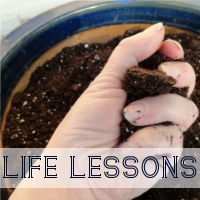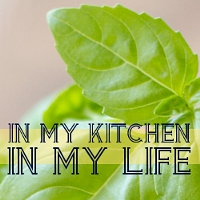(Read the after-meal update below.)
Before Sunday lunch:
We had invited a family from our congregation to be here this afternoon after worship for lunch and some time together. I was going to reprise the exact same Canal House-adapted beef braise I made for last Sunday for another set of guests. The beef cubes were thawed and waiting in the fridge when I came down with a stomach virus or reacted badly to something I ate. So, we cancelled the company and here I am at the computer while the rest of the family is worshiping God. Ugh.
Still, my sickiness has yielded a sort of experiment. I felt too ill to face much kitchen work yesterday, but I had this large package of stew cubes to deal with by either cooking them or re-freezing them. Re-freezing is possible, despite what the home economy nazis say, but I still hate to do it. I decided to try to provide my own family with a Sunday lunch and conduct a little research at the same time.
The most tedious thing about making a braise is browning the protein and sautéing the aromatics. In addition this Canal House recipe calls for flouring the beef, something I almost never do, although I did it last week and the result was very good. I do believe in the wisdom of building flavor into the braise by careful caramelization of the meat before mixing in the other ingredients, flour or not. There are some French daubes that skip the browning step and indeed direct the cook to marinate the meat and veggies in the wine for a day or two before simply tucking the whole thing into the oven for a few hours. The Canal House authors make a point of saying they dislike the result of marinating raw beef in wine before braising, believing it results for some reason in a dry texture. I wondered how much difference the three techniques — marinating without browning, browning, or flouring and browning — actually make to the finished taste and texture of this beef braise. I decided to let my illness be the excuse to try the laziest possibility of all, a fourth way of getting to the braising step — which is just to mix everything in the big pot and, without previous marinating or browning, let it braise for a few hours in peace. The braise’s peace and mine, to be exact.
The verdict won’t be in for a couple of more hours until after lunch, but here are my observations so far:
1. The meat took much longer to become tender when started without browning — four hours versus just over two for last week’s braise.
2. The braised dish is pretty unattractive, as I expected it would be. The meat is grey and the juices are pale.
I plan to remove the meat and veggies from the pot and thicken the unskimmed juices (there isn’t much fat since I didn’t add any oil for browning), with a slurry of flour and a bit of the cold juices dipped out before I reheat the remaining broth. If it looks too awful, I may stir in a little Kitchen Bouquet I think I have lurking in the pantry recesses — it must be more than a decade old, but I don’t think the stuff goes bad, does it? Or perhaps a tablespoon or two of balsamic vinegar will brighten up the flavor and darken the sauce. I’ll report back later.
Update, after Sunday lunch:
My plan to thicken the stew had to be modified because the very liquid juices of last night’s post-braise stew had jellied after hours in the fridge. So, I made a thick slurry of water and flour and stirred it into the heating stew when it had not yet gotten hot. I covered it and heated it for a good while on low heat, giving it the occasional stir to prevent sticking and just to reassure myself that all was well. It looked better and better as it heated up, and in the end I did no doctoring to make it more attractive. We ate it with wide egg noodles and good bread, and three of us taste-tested it against a bit of re-warmed and admittedly old stew from last Sunday. (Really, it was too old, and I truly don’t usually eat food that old, but I brought it to a good simmer and decided to chance it in the interests of culinary research.)
The verdict? One of us said the two stews tasted different but would not choose a favorite, and two of us liked the easy-method stew best, although the results may literally be tainted by a too-elderly specimen, I’m afraid. Today’s stew is not quite as tasty as I remember last week’s being, but who can tell how time and chance vary impressions?
What I have learned:
1. I love stew.
2. Stew improves as it ages for a few days, but there is a limit to this maxim.
3. If time and inclination make it difficult for the cook to do the classic pre-braise steps of browning protein and sauteeing aromatics, that should not prevent her from confidently making a perfectly respectable thrown-together main dish. Never apologize!
 Follow
Follow









